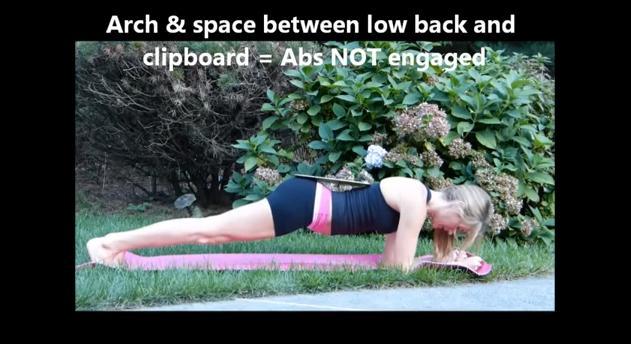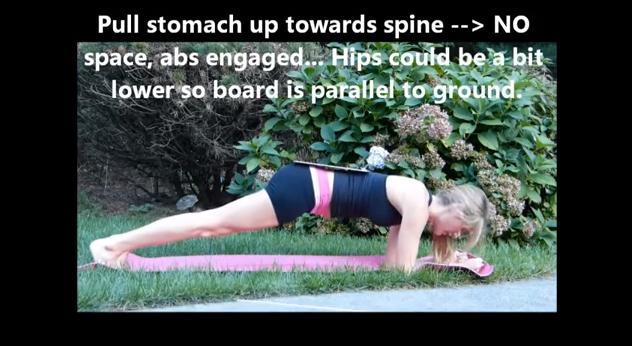One of the most frequently asked questions I get as a conditioning coach is this: What can I do to improve my core strength? Building core strength is one of the most important things anyone can do in an effort to improve their overall function and mobility, and it could also be key to you surfing comfortably as you age, as a strong mid-section can decrease the risk of injury to the low back. Like any other active population, surfers can benefit immensely from increased strength in the abdominals, oblique’s, and low back muscles, as it is paramount to maintaining balance and stability throughout the varying shifts in weight and body position while in the water.
The core is made up of your abdominals (the 6-pack muscles), your oblique’s (presently a love-handle?), and your erector spinae muscles (the backside of the muffin-top). Whether you can see them or not, there are muscles that wrap around your entire midsection. Their function is to stabilize the body and provide support for your extremities. Weakness here can lead to decreased strength in the upper and lower body, an inability to stabilize the body during dynamic movements, and an increased risk for injury. The surfing translation: you can’t strengthen your body to its potential, you’ll be more unstable while on a wave, and the likelihood of you surfing comfortably much past your 30’s is slim to none.
The old-school train of thought was to do a million crunches if you wanted a strong stomach. And while this approach can yield positive results, more often than not people were experiencing pain in their neck, lower back, or psyche! Seriously, who really wants to do hundreds of sit-ups every day? Whereas the standard sit -up contracts the abdominals while flexing and extending your spine, a plank forces sustained contraction of the abs while maintaining a neutral spine. When performed correctly, this significantly decreases the risk of injury to the back and neck by removing most if not all the stress placed on those muscle groups. Because of this, the countless variations of planks are the safest and most effective means to increasing strength and stability in your core.
As previously mentioned, a plank forces contraction of the abdominals while allowing the spine to work in a neutral position. When performing a plank, make sure that your base (hand or elbow) is directly underneath your shoulders. This distributes the body weight appropriately and forces the core to do the work. Secondly, ensure that ALL of the stress is felt in your stomach, NOT in your low back. Besides focusing on which muscle group you feel working, you can visually check your plank technique by placing a clipboard across the top of your butt and the small of your low back. Using a mirror to help, make sure there is NO gap between your back and the clipboard. By pulling your abdominals in tight, the slight and natural arch in the lower back will disappear and therefore the stress and focus of the plank will shift to the abdominals only. If you have not been performing planks correctly, this will seem difficult, but master this. It is the only way to correctly and effectively build up your core strength. Nearly every exercise (Core/Upper/Lower body) is contingent upon your ability to maintain this position. Perhaps the most common mistake I see at the gym is the proper plank body position being overlooked, by both trainers and gym members alike.
Improper plank technique.
Proper plank technique.
Depending on your ability to attain the proper pushup plank position, progressions can be made to place more stress on the targeted muscles. A plank can be varied in intensity by changing the elevation of the body and by adding movement or instability to the exercise. For example, a pushup plank with your hands on top of a bench seat places far less stress of the abdomen than a pushup plank from the ground. Similarly, a plank with your forearms as the base decreases the angle of your body and therefore increases the difficulty of the exercise. Examples of instability and movement during a plank include performing Mt. Climbers or placing your hands on a Bosu or PhysioBall during a pushup plank. Again, it is imperative to maintain the proper body position when adding in additional challenges to the original exercise. If you can maintain in perfect form for longer than 45 seconds, you should progress to a more challenging plank variation rather than increasing the work interval.
Aside from keeping the spine safe, plank variations are particularly effective for surfers because they require strength and stability in the shoulders and often incorporate movement at the knees and hips. This combination of muscle groups can improve your movement patterns and decrease the time at which it takes you to hop up on a wave. In addition, because many planks are performed in the prone (face down) position, they develop strength and muscular endurance in the muscles used while on your board. Your core is firing continuously while surfing, whether it’s popping up on a wave, digging in on a bottom turn, or powering yourself through a big backside snap. Perfecting the following plank variations will help keep your midsection strong and allow you to continue to improve your strength throughout the rest of the body.
|
|
For the above exercise demonstrations and more, visit our video page!
http://www.youtube.com/user/SurfersViewFitness?feature=mhee
Plank away, and Stay Active!
Adam Papendick, CSCS

